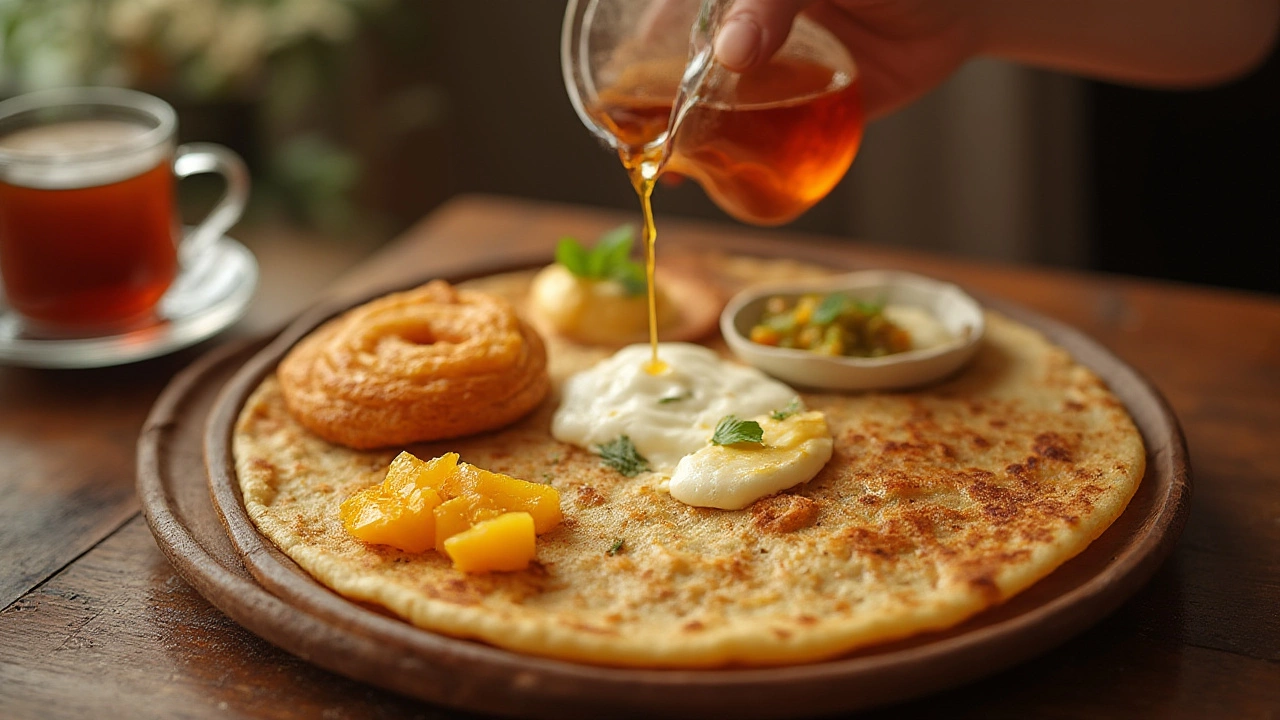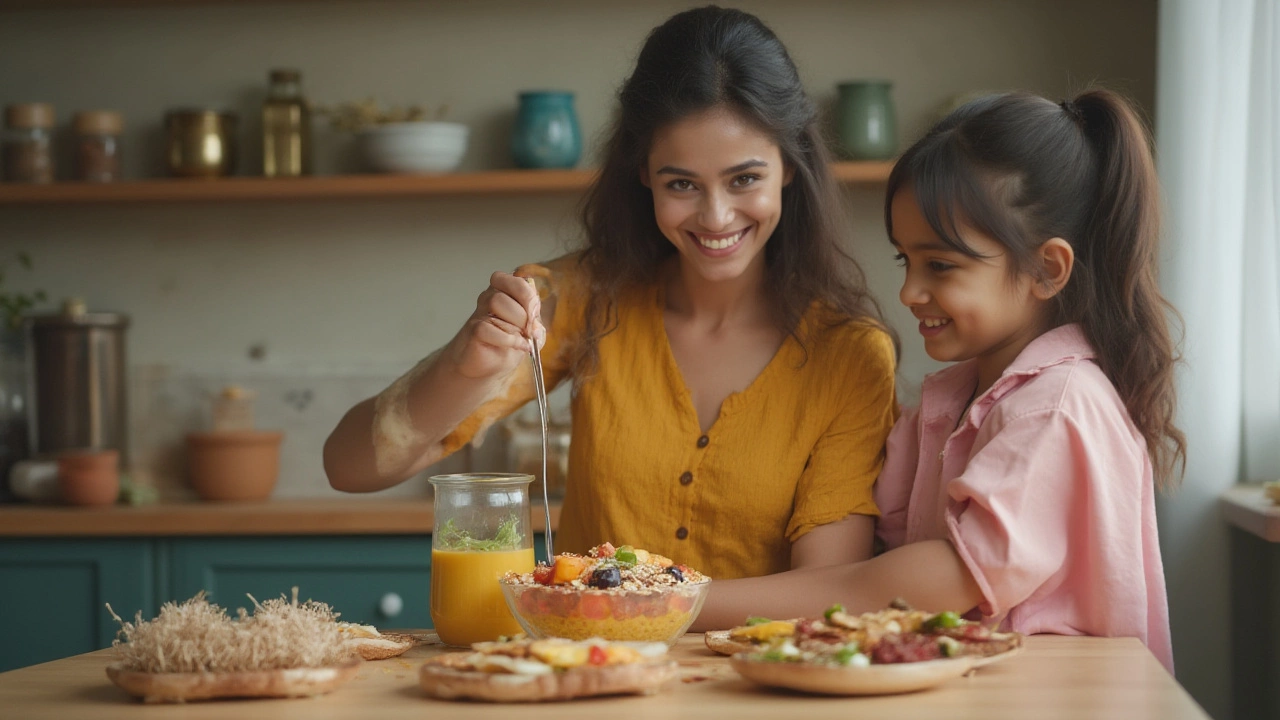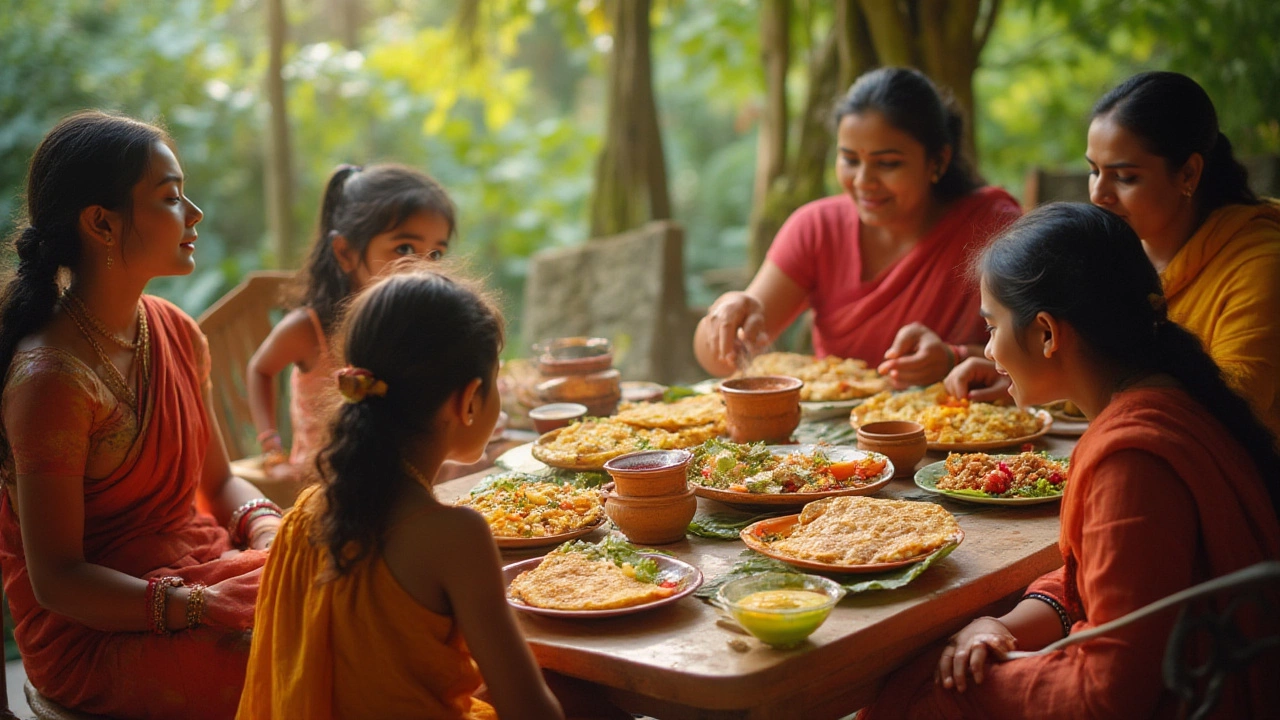Imagine waking up to the smell of spiced chai, street vendors calling out with trays of piping hot snacks, and the clatter of stainless steel as families dig into breakfast. That’s what mornings look like across India—a chaos of colors, aromas, and movement. Breakfast isn’t just the “first meal of the day” here. It’s a ritual. It sets the tone for the whole day, whether you’re dashing off to school in Mumbai or sipping tea near the backwaters in Kerala. And with India’s wild diversity, there’s no one-size-fits-all answer to the question, “What should I eat in the morning?” The variety will blow your mind, with options that are hearty, sweet, spicy, or somewhere in-between. And if you want a breakfast loaded with flavor, history, and even science-backed health perks—there’s nowhere like India.
Classic Regional Indian Breakfasts: What Locals Really Start Their Day With
If you’ve only heard of “Indian food” as an all-in-one term, brace yourself. India is massive, and every corner approaches breakfast with its own rules. People in the north wake up to the sizzle of parathas—flatbreads stuffed with spicy potatoes, paneer, or radishes—topped with melting butter and a swirl of homemade curd. Move close to Delhi or Punjab and you’ll witness families dipping piping hot aloo parathas into tangy pickles and tall glasses of creamy lassi. It’s the kind of meal that’ll keep you going all day, especially if you’re bracing for north Indian winters.
Take a train south and the scenery (and the menu) flips. Down in Tamil Nadu, Karnataka, and Kerala, mornings often start with steaming stacks of idli—fluffy, cloud-like rice cakes—served alongside coconut chutney and sambar, a spicy lentil soup. If you want something with a little crunch, there’s dosa, a wafer-thin crepe with crispy edges you can dunk in a rainbow of chutneys. And let’s not skip the classic upma—a savory porridge loaded with veggies—if you need something quick and filling but a little lighter. People here swear by heavy breakfasts because lunch can arrive fashionably late, so you need a meal that goes the distance.
In Kolkata, you’ll spot folks huddling around roadside shacks sharing plates of luchi—tiny, puffy breads fried until golden and light as air, served with spicy potato curries. Bengalis love their sweets, so breakfast might end with mishti doi (sweet yogurt) or a rasgulla to give you that sugar boost before a busy day. Over in the west, especially in Maharashtra and Gujarat, there’s poha—flattened rice sautéed with peas, peanuts, and turmeric—that’s quick to cook and easy on the tummy. Add a squeeze of lime, a pinch of sev (crispy chickpea noodles), and you have a breakfast that’s both comforting and bright.
Other regions have their unique twists. Hyderabad’s early risers dig into kheema-pav (spiced minced meat with buns), while Rajasthanis enjoy dal baati—a combo of lentil curry and baked wheat balls. Jammu has its famed kulchas, and Sikkim’s thukpa (noodle soup) really warms you up. The point is, whether you’re vegetarian or eat everything, whether you like spicy, creamy, crunchy, or sweet, you’ll find a breakfast plate in India that makes you happy before 9 a.m.
Want to see the variety at a glance? Here’s a table showing staple breakfast dishes and where to find them:
| Region | Main Breakfast Food | Main Ingredients | Special Pairings |
|---|---|---|---|
| North India | Paratha | Whole wheat, potatoes/paneer | Curd, butter, pickle |
| South India | Idli/Dosa | Rice, lentils | Sambar, coconut chutney |
| West India | Poha | Flattened rice, peas, peanuts | Lime, sev |
| Bengal | Luchi with Aloo Sabzi | Refined flour, potatoes | Mishti Doi (sweet yogurt) |
| Gujarat | Dhokla | Fermented gram flour batter | Green chutney |
| Northeast India | Thukpa | Noodles, vegetables/meat | Chili sauce |
So, if you ever get the chance to travel in India, don’t just stick to your hotel buffet. Ask a local what they eat for breakfast, and try the real deal. Every region offers something different, and every household puts its twist on old traditions.

Best Healthy Choices: Balancing Flavor and Nutrition with Indian Morning Foods
Okay, so Indian breakfasts are delicious. But are they healthy? Hidden beneath all the talk of deep-fried bread and potato curries, there are tons of options that are loaded with nutrition. In fact, a lot of classic dishes are built on lentils, rice, veggies, and fermented batters—which are big wins for your gut, your blood sugar, and your long day ahead.
Fermented items like idli and dosa batter have live bacteria (probiotics) that can support digestion. That’s not just grandma talking—several studies, including research published by the Indian Council of Medical Research, show a real link between fermented foods and better gut health. If you’re going for a paratha, whole wheat gives you fiber, and curd (yogurt) adds protein and more probiotics. Feeling adventurous? Try substituting classic potato fillings for paneer (homemade cheese), spinach, or even grated carrots to bump up the vitamins without sacrificing flavor.
Poha might look basic, but it’s light on oil and gets a protein kick from peas and peanuts. Throw in chopped coriander and a squeeze of lemon—plus the turmeric, which helps fight inflammation (a bonus, according to research out of AIIMS, Delhi). Same for upma—you can toss in whatever leftover veggies you’ve got. And South Indian sambar, the companion to those idlis and vadas, is made with lentils, tamarind, and a rainbow of vegetables. That adds up to fiber, iron, antioxidants, and lasting fullness.
If you’re not after a heavy breakfast, try daliya (cracked wheat porridge)—often eaten in Delhi and parts of northern India. It’s similar to oatmeal, but has more texture and packs in complex carbs that keep you full. In Kerala, there’s appam (a rice pancake) served with vegetable stew. Both are naturally gluten-free and won’t weigh you down.
A lot of Indians also hit the morning with a glass of warm milk or buttermilk—if you don’t love heavy breakfasts, this offers light protein and soothes the stomach. If you’re lactose-intolerant, almond milk or even coconut milk (especially in Kerala or Goa) are easy swaps.
Of course, indulgence is a mood. Sometimes you’ll want those samosas, jalebis, or puris. No shame! But if you’re after a more balanced start, look for:
- Plant-based proteins (lentils, chickpeas, beans, paneer)
- Whole grains (millets, poha, wheat, rice)
- Fermented foods (idli, dosa, dhokla, yogurt)
- Plenty of veggies
- Natural sweeteners (jaggery, dates, honey) over sugar
And don’t forget to hydrate! Chai is classic, but many families also love a glass of nimbu pani (lemon water with salt and sugar) to kickstart the system. If you need caffeine, go with masala chai—black tea brewed with spices—rather than overly sweetened coffee drinks.
Check out this at-a-glance breakdown of nutrients in popular Indian breakfasts:
| Food Item | Main Nutrients | Calories per Serving |
|---|---|---|
| Idli (2 pcs) | Carbs, Protein, Probiotics | 70 |
| Poha (1 cup) | Carbs, Fiber, Iron | 180 |
| Paratha (1 pc) | Carbs, Protein, Fiber | 200 |
| Upma (1 cup) | Protein, Fiber, Vitamins | 230 |
| Dhokla (2 pcs) | Protein, Probiotics | 90 |
So yes, you can have breakfasts in India that are not just bursting with flavor but also friendly for your body—and you can find these options easily on the street, at cafes, or even in someone’s home.

Tips for Eating Breakfast in India: Hygiene, Variety, and Eating Like a Local
If you’re traveling or relocating, the excitement of Indian breakfast scenes can fizzle if you run into a dodgy meal or get a little too daring with the unknown. Here’s how to play it smart and get the best experience, whether you’re dining out or eating at someone’s kitchen table.
First thing: go where the crowds are. In India, a busy breakfast stall often means fresh food and clean turnover. If you spot long lines for poha, kachori, or chai, that’s your signal. Watch how the food is handled; vendors usually plate hot dishes with tongs or gloved hands in good spots. On a side note, skip chopped raw foods unless you’re somewhere you absolutely trust, as water quality is a thing. Cooked, hot food is always safest.
If hygiene is a worry, stick to restaurants that are busy with locals—even if they look simple. In South India, “tiffin halls” serve idlis and dosas lightning fast. Filter coffee is a must there. In bigger cities, modern cafes do great takes on traditional foods, with more attention to cleanliness. Don’t be afraid to ask how old the samosas are, or whether the chutneys are made that morning. Locals do this all the time, and vendors expect questions.
When at home or invited to breakfast, try everything—even the stuff that looks intimidating. Half the magic is in the accompaniments: spicy chutneys, cooling raitas, tangy pickles, or sweet jaggery. People love sharing recipes and will almost always insist you have one more paratha or a second helping of poha. Just enjoy—food is a kind of hospitality here.
Variety is the spice of life. India’s climate and produce seasons mean the same family might eat upma all year, but switch to makki di roti (corn flatbreads) and sarson da saag (mustard greens) in winter. Ask about seasonal specialties—like mango sheera when mangoes flood the markets, or gajak and chikki (nut brittle) during winter festivals.
And don’t freak out at the spice. If it’s too much for you, say “No masala” and “less chili” at a stall, or scoop up a little curd to cool your mouth between bites. People will happily tweak a dish to suit your kid’s taste or your own. When in doubt, go light on the chutneys, pick milder sambar, or order simple daliya porridge or toast with local honey—yes, you can get that almost anywhere as well!
Food is a common bond here. You’ll see neighbours swapping tiffins (lunchboxes), office canteens buzzing over hot pakoras, or entire extended families sitting down together on weekends. Ask about family favorites; every household has a dish that’s “theirs,” with stories behind it. Try to eat with your hands (on the right hand, please)—it’s the traditional way in many parts, believed to heighten the senses and connect you with your food more fully.
Got dietary needs (vegan, gluten-free, allergies)? No stress! With such variety, you’ll find something. Just talk to the cook or vendor—“No ghee,” “No eggs,” “No gluten.” South Indian classics like idli, dosa (ask for no butter/ghee), and poha are naturally vegan and gluten-free. You can also try millet-based breakfasts like ragi dosa, which are both filling and kind to the stomach.
Here are a few useful tips for anyone deciding what to eat in India in the morning:
- Go early—the best dishes sell out quick.
- Watch the locals to see how a dish is eaten and what to pair it with.
- Don’t hesitate to ask for extra chutneys—each one adds a new layer.
- Try both savory and sweet breakfasts for the full experience. Don’t skip chai or filter coffee unless you don’t do caffeine.
- Hydrate! India’s weather can be intense, especially if you’re not used to the heat.
Eating breakfast in India isn’t just about the food. It’s about slowing down, tasting every contrast—a crispy vada dipped into warm sambar, the tang of curd cutting through a spicy paratha, the comfort of a sweet milky chai—and waking up your senses. There’s no single answer to what you “should” eat for breakfast, but if you follow your nose, trust the locals, and open up to new flavors, you really can’t go wrong.
